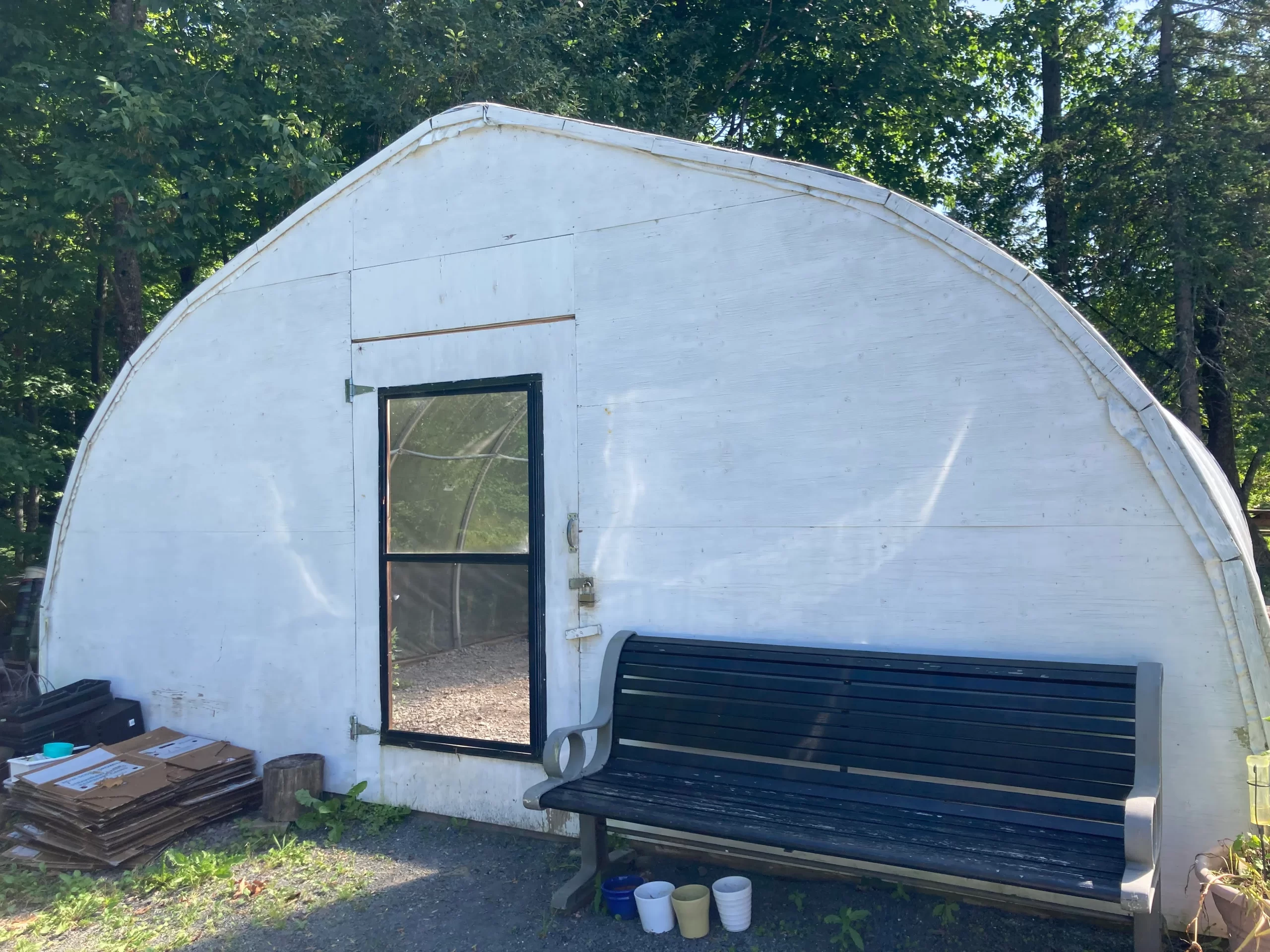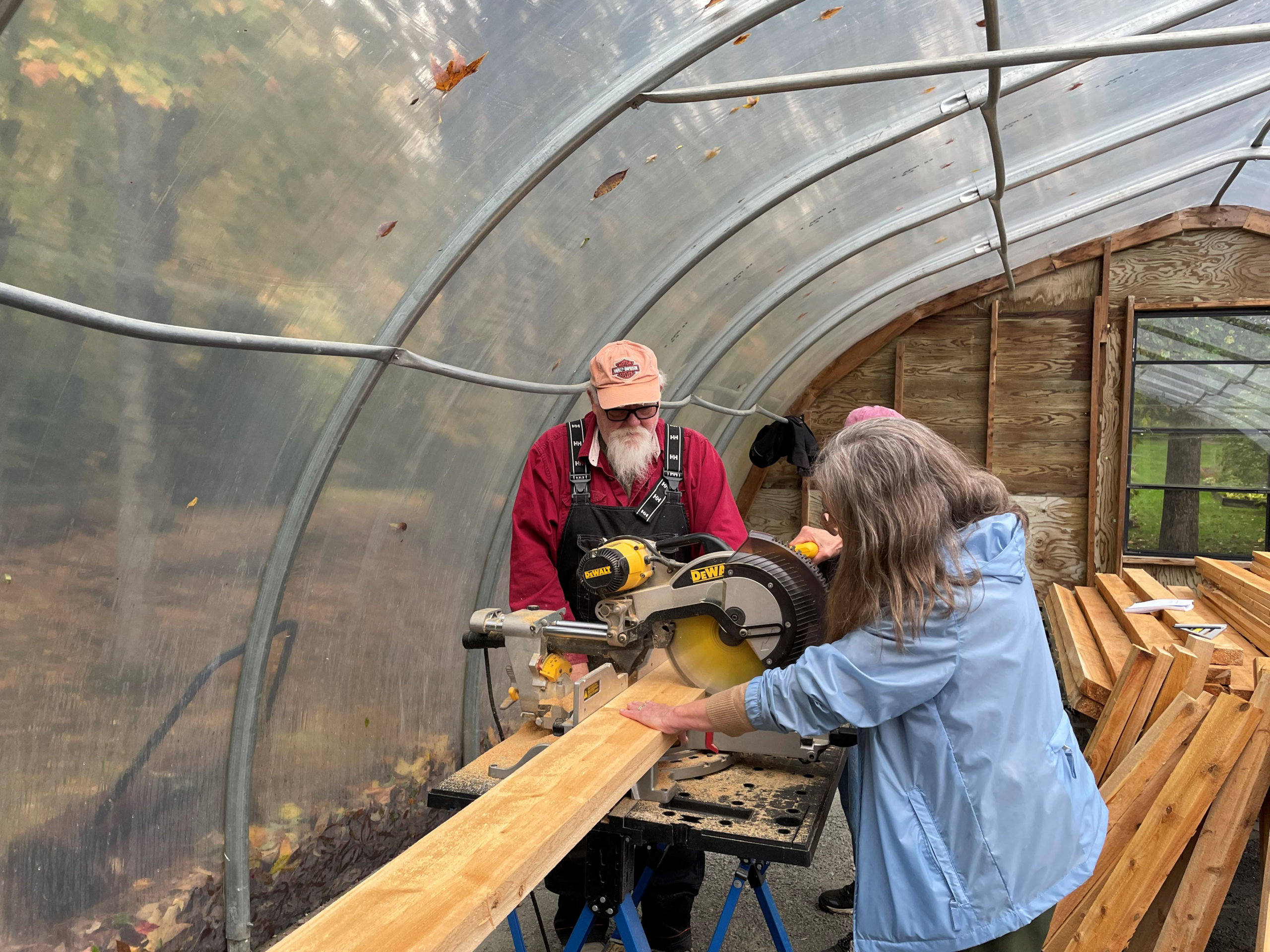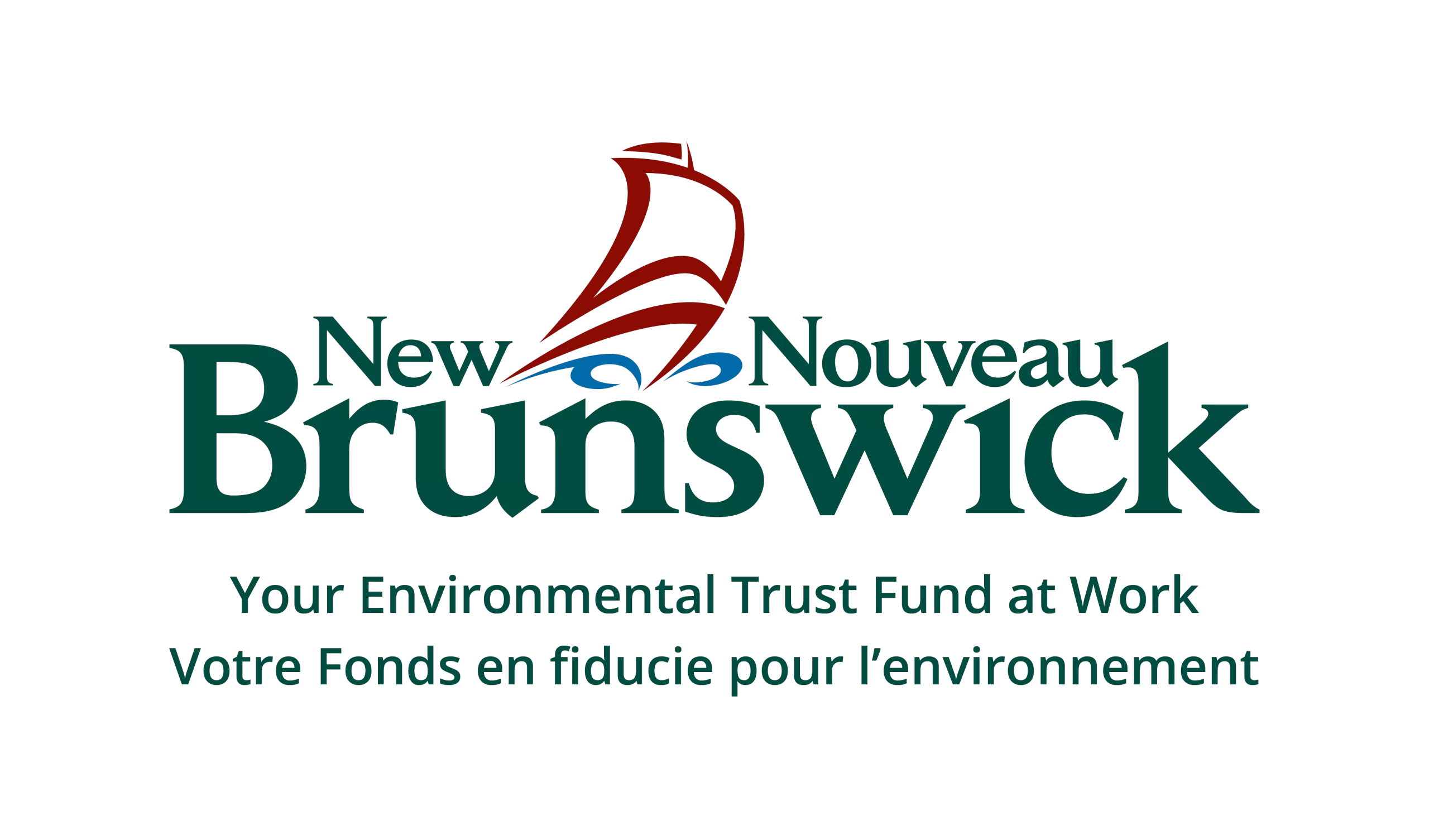Greenhouse Renovations
With financial support from the Government of Canada’s New Horizons for Seniors Program, we’re well on our way to having a safe, dry, comfortable and wheelchair accessible greenhouse. This work was carried out by volunteers, many themselves seniors, under the direction of Red Seal Carpenter, Eldon Toner, himself a senior.
The old, leaky plastic was removed from the larger of our two greenhouses and replaced with a new waterproof covering. The raised threshold was removed to provide barrier free access and some rotten sills were replaced at the same time.
Matt Furlotte brought his mini excavator and leveled the greenhouse floor. He then dumped and smoothed loads of crusher dust, which was tamped down to provide a smooth surface.
The exterior received a fresh coat of paint, as did the adjacent greenhouse, which wasn’t remodelled. Steve Heard, who led the painting project, didn’t want the little greenhouse to feel left out.
We’ll soon be building workbenches along one side of the interior of the greenhouse. The benches will have stepped down areas, so wheelchair users, or those who wish to sit while working, can be active participants in potting up and transplanting, as well as workshops that are held within the greenhouse.

Accessible Planters

With financial support from the Government of Canada’s New Horizons for Seniors Program, we’re well on our way to offering an improved Garden experience to persons with mobility impairments. These enhancements are being carried out by volunteers, many themselves seniors, under the direction of Red Seal Carpenter, Eldon Toner, himself a senior.
We’re constructing two types of raised garden beds. The first batch, which have been completed, will be stationed trailside and planted with flowers in the adjacent gardens, which do not yet have accessible access. Visitors will be able to roll or walk right up to these planters.
The second batch will be built at a lower height and with wheelchair access, providing an opportunity for members, volunteers and staff with mobility impairments to actively participate in different aspects of gardening – including weeding!
Mapping the Garden
Through the generosity of Stantec, the Fredericton Botanic Garden Association is looking forward to having detailed map layers to better inform our planning and execution efforts. Over the latter part of 2024 and the start of 2025, Stantec will be developing topographic and hydrologic layers for the Garden, as well as layers showing locations of important features such as art installations and memorial/tribute benches and trees.

New Brunswick PLANTS website

With Jim Goltz’s extensive plant knowledge and funding from the Province of New Brunswick’s Environmental Trust Fund, the Garden has been developing an online pictorial guide to the native and naturalized vascular plants of New Brunswick. Building on the groundwork of Hal Hinds’ Flora of New Brunswick, the guide is visual and based on digital photographs taken by scientists and naturalists.
The site is being designed for use by the general public, but will also be invaluable for scientists, land use managers, government officials, academics, students, conservation agencies, environmentalists and ecotourists. The resource depicts characteristics of each species that are important for identification, including flowers, leaves, fruits and other anatomic features. Non-scientific terms have been used where possible and the identification process can begin with any of the available selectors. Distribution maps (courtesy of the Atlantic Canada Conservation Data Centre), unique characteristics, conservation ranks, family pages, and similar species provide additional details for each plant.
It is exciting for the Fredericton Botanic Garden to spearhead this unique resource for our province. While the site is still very much a work-in-progress, there are now approximately 800 species live on the site, newbrunswickplants.ca, with more being added each week. Grasses, rushes, and sedges are the species currently being added. In future years, the site will include information about plant and wildlife relationships, a French site, additional illustrations, and further links between similar species.
In addition to the Environmental Trust Fund, the Garden values the in-kind support provided by the Atlantic Canada Conservation Data Centre, the Nature Trust of New Brunswick and the University of New Brunswick Department of Biology and Connell Herbarium. We are thankful to the many naturalists throughout the province and Garden members who have provided feedback, information and images as we develop the site.
Please let us know if you would like to be involved in this multi-year project.